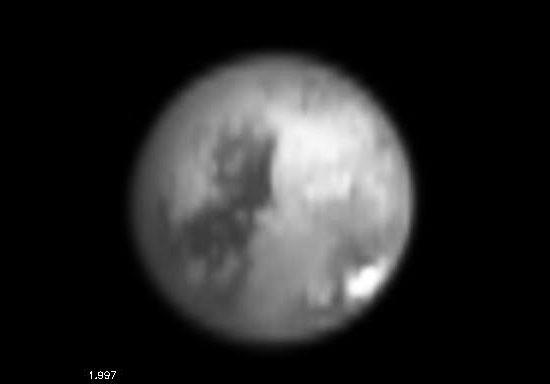Window to Titan’s Surface

| Language |
|
|---|
This movie taken by the Cassini spacecraft shows the surface and atmosphere of Saturn's moon Titan over a range of infrared wavelengths, from .8 to 5.1 microns. It was captured by Cassini's visual and infrared mapping spectrometer on Oct. 26, 2004, as the spacecraft flew by Titan at an altitude of approximately 450,000 kilometers (280,000 miles). At specific wavelengths, surface features can be seen through Titan's haze, while at other wavelengths, the surface remains completely hidden.
The Cassini-Huygens mission is a cooperative project of NASA, the European Space Agency and the Italian Space Agency. The Jet Propulsion Laboratory, a division of the California Institute of Technology in Pasadena, manages the Cassini-Huygens mission for NASA's Science Mission Directorate, Washington, D.C. The Cassini orbiter and its two onboard cameras were designed, developed and assembled at JPL. The visible and infrared mapping spectrometer team is based at the University of Arizona, Tucson.
For more information about the Cassini-Huygens mission visit, http://saturn.jpl.nasa.gov. For more information about the visual and infrared mapping spectrometer visit http://wwwvims.lpl.arizona.edu.
Image Credit:
NASA/JPL/University of Arizona
